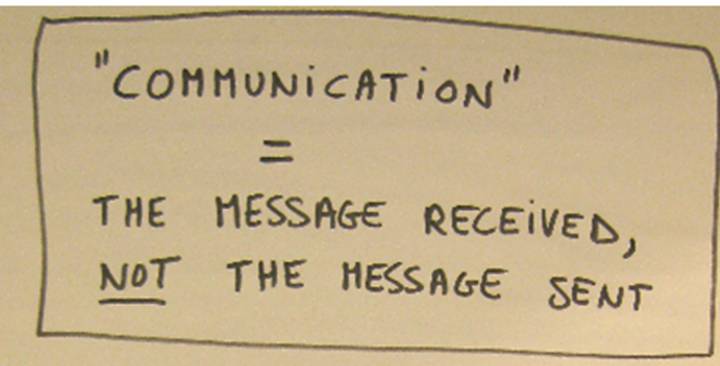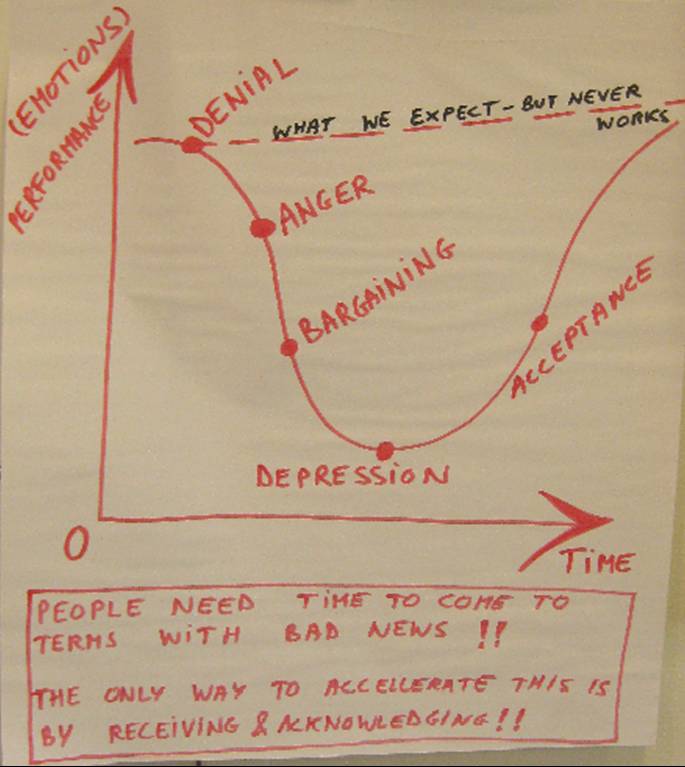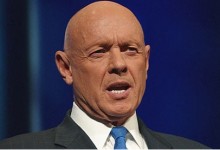What should be the result of successful communication? In this article I am building further on earlier insights about the format and the quantity of communication. Now it is time to dive into the qualitative aspect.
In a 2008 article I stated that communication is not the message sent, but the message received. I also wrote about the anatomy of a communication and why it should be tailored according to the information needs of the receiver.
To summarize these articles, one could say that we’ve tackled two dimensions of communication:
1. The FORMAT: there is an optimal anatomy for effective communication, it’s called Know-Feel- Do.
2. The QUANTITY: more information is not always better; one should underscore certain boundaries and then explore the topic within those boundaries.

Ok – fair enough – but how about the QUALITY of communication?
What should be the Result of Succesful Communication?
At first you may think this is a rhetoric question – one that needs no answer; a statement. We communicate in order to get our point across. Period. So that’s what we do – day in, day out, presenting, advertising, emailing, meeting, etc. But when we measure the success of those communications at the receiver’s end, a strange pattern seems to unfold.
It seems that the quality of a communication is determined by the extent to which the receiver feels understood and involved, rather than by the amount or the quantity of information. In other words: it is the relationship, rather than the content which determines the quality of a communication.
It’s hidden in the word: “Communication” requires “community” in order to work, so any exchange of information that does not result into being in relationship is actually non-communication. In that sense, good communication is more about receiving and acknowledging than about sending.
Stephen Covey warns that giving out advice before having empathetically understood a person and their situation will likely result in rejection of that advice. He makes this point pretty well in his 1989 book The Seven Habits Highly Effective People when he declares Habit 5″ – Seek First to Understand, Then to be Understood.
What does this mean for organizational change practitioners?
In the course of organizational change programs it is even more important to ensure your message gets across. The messages you need to convey are not always the most desired or positive ones, and yet we need to ensure to take the shortest path to people’s hearts, minds and hands.
The below picture was drawn in a discussion on this topic. We take the Kuebler-Ross cycle of change as a given. This is a natural process that all of us go through when we are confronted with any change. The point is that people need time to make sense of the change pains. It’s a fact of life (or should I say ‘death’ instead?).

Of course we want to increase the speed of change. People – and that includes you and me – will only do what they understand, and they will be even more likely to follow your advice when they feel understood. This means we should be as creative as we possibly can in involving them and making them a co-sensemaker and a co-creator of the new reality you need to put in place.
Accelerating sense-making means shutting up, listening, acknowledging the communication so as to create a relationship with the receiver.




Pingback: Exactly HOW can I be Responsible for the Communication? | Reply-MC()
Pingback: If it’s not about Community it ain’t Communication | Reply-MC()